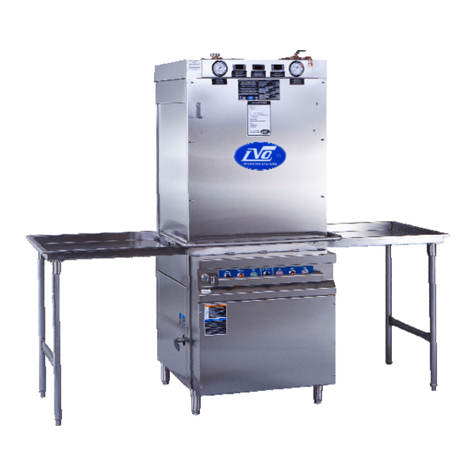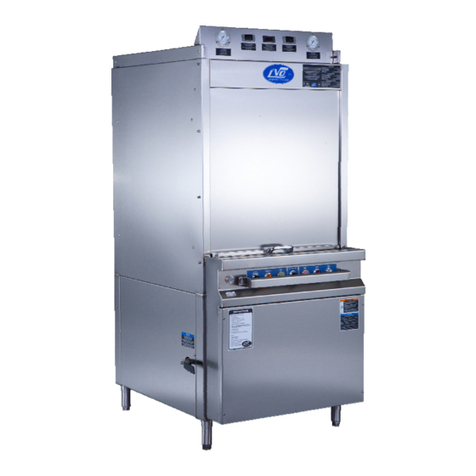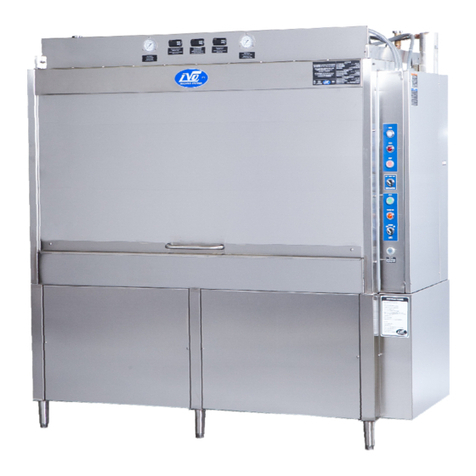
LVO Manufacturing, Inc.
LVO Manufacturing, Inc.LVO Manufacturing, Inc.
LVO Manufacturing, Inc.
808 N. 2
nd
Avenue E., P.O. Box 188
ock apids, IA 51246
www.lvomfg.com
(712) 472-3734
1-800-346-5749 Fax (712) 472-2203
0
Once the machine is in the pit, the front floor grate(s) should be set in place. The machine
should then be moved ahead to eliminate any gaps between the machine and grates, yet leaving
enough space that the floor grate can be removed for periodic hosing down of the pit floor.
Step 4 DRAIN: Provisions for the drain should be made next. The rack washer has a copper drain
located as shown on the drawings (see specifications page for drain size). The drain should be
plumbed according to local code. Local ordinance may require a grease trap, vent, and/or a
floor sink. If required, these should be installed before the machine is installed. It is strongly
recommended that unions be used to allow the machine to be easily moved. Failure to do so
may void the warranty.
Models that sit in a pit do not require a drain connection, as the wash tank drains directly into
the pit.
Step 5 WATER SUPPLY HOOK-UP: The factory recommends 40°F hot water at the machine
(see specifications page for water line size). This may require a dedicated water heater for the
rack washer. If hard water is present, the manufacturer recommends installing a water softener
or calcium filter. Hard water deposits will shorten the life of many of the components on the
rack washer, resulting in higher maintenance costs. Please note that a union is installed at the
point of hook-up (see drawings). This will allow the machine to be moved for service and
cleaning. The customer must furnish a shut-off valve on the supply side of the union. This
shut-off should be easily accessible to the operator of the machine. Additionally, if the
machine is located a long distance from the water main, it may be necessary to supply a larger
line to the machine to insure proper water pressure and flow for the machine to operate
correctly.
Step 6 STEAM VENT: The machine is equipped with a collar for 2” duct work as shown on the
drawings. This duct should be directly vented to the outside of the building. DO NOT vent
into a wall, attic, or any other concealed space of the building, and avoid horizontal runs of
duct.
The factory recommends 2” plastic pipe or stainless steel duct for the vent. If stainless steel
is used, the duct work should be installed with reverse joints so that the condensate inside the
vent can drain back into the machine without leaking, and all seams should be sealed with
silicone sealant.
Generally, the machine ships with a Hp squirrel cage exhaust fan. The exhaust fan should be
mounted and silicone directly to the flange on the top of the machine before the duct is
installed. The ductwork attaches directly to the exhaust of the fan. Wire is provided to wire
the fan directly into the control panel. A dedicated circuit breaker and contactor for the fan are



































